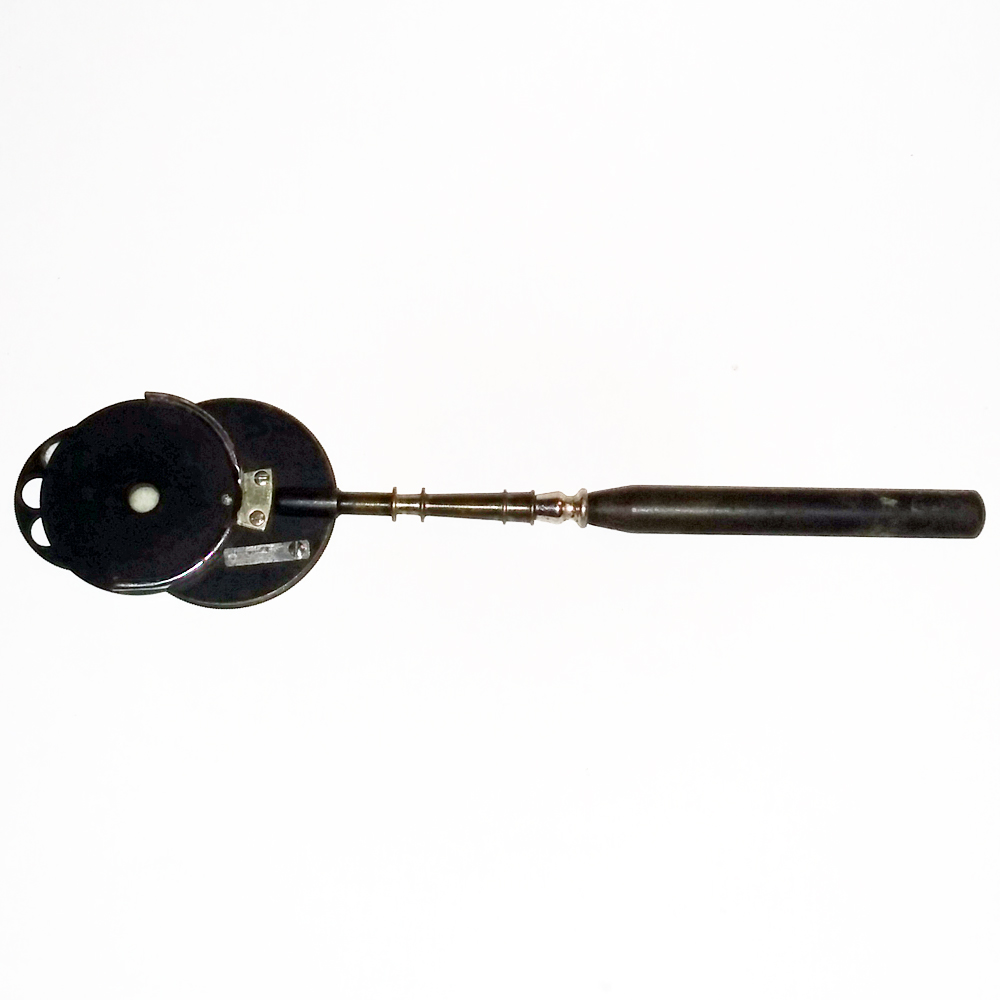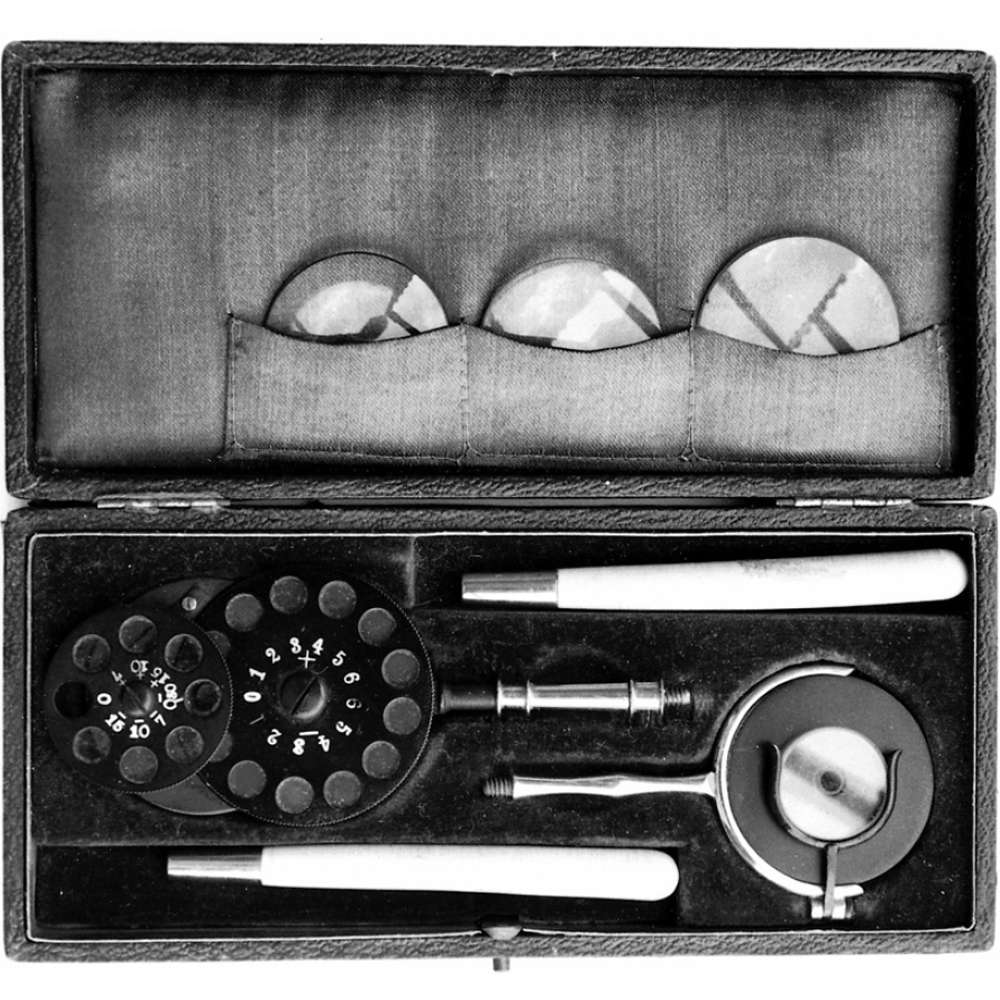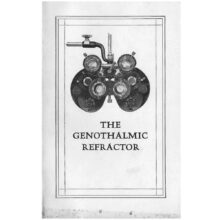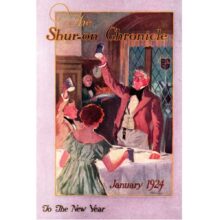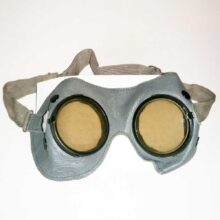Straub ophthalmoscope 1890
This particular specimen is only half of the full kit that existed originally. This was originally from the Netherlands.
The appearance of Straub’s ophthalmoscope is that of those at the end of the 1880’s. He was still a military officer then. His instrument is similar to the models of Hirschberg (1877) and Grolman (around 1880). There are two discs with separate centers of rotation and each has an empty opening. The larger disc (4 cm. diameter) has 6 concave and 6 convex lenses from 1 to 6 diopters. The small disc (3 cm. diameter) includes 7 lenses: concave -0.5, -7,-10, and-15 ; and convex +7,+10, and +15. There is a right angled tiltable plane mirror, a concave mirror with a small clip, corrective lens, an extra clip, and two handles. In the cover there are three reversing lenses. The manufacturer’s name could not be found. This instrument is found in almost all the museums of medical history in the Netherlands today.
Straub was born in Poortugal (not misspelling) near Rotterdam in 1858. He studied medicine in Amsterdam where he received his doctorate in 1882. During his military service as a physician in Utrecht he studied under Donders and Snellen. In 1895 he became a full professor in ophthalmology at the University in Amsterdam.
There, he worked for the rest of his life as a gifted demonstrator and speaker. He introduced the use of fluorescein for determining loss of corneal epithelium and published a preserved, hand-written essay by Christian Huygens about the eye and vision from around 1691 to 1692. Straub participated at the 39th meeting of the ophthalmological society in Heidelberg in 1913. At the peak of his professional career, he was developed stomach cancer and died of it in the spring of 1916.
